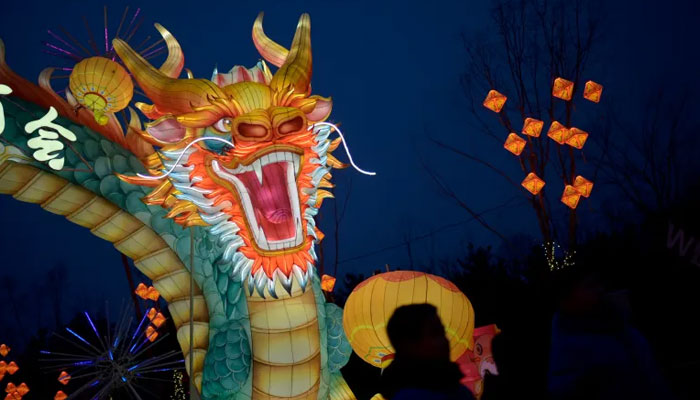Chinese lunar year dragon has roots in 4,000-year-old Mesopotamian myth
Chinese lunar year dragon is not only connected with Mesopotamian civilisation but has origins in England too
The Lunar New Year begins today, bringing with it the year of the dragon in Chinese mythology in which the word "lóng" (掍), translates to "dragon" in English.
But don't let the similarity fool you: the stomping, fire-breathing creatures of English legend are not at all like the lucky, ethereal Chinese dragons, according to BBC.
To begin with, the Chinese term for a tornado, lóng ju̎n fēng, translates to mean "swirling-dragon-wind", suggesting that they are more closely related to wind than fire.
Furthermore, Chinese dragons are not the same as the majestic Sumerian "ušum-gal," a legendary snake-bodied, lion-jawed monster from antiquity.
People have created terms that roughly translate to "dragon" all over the world and in many different languages; nevertheless, there are major cultural differences in how people conceptualise these beings, and whether they perceive them as sacred, friendly, dangerous, or just a little annoying.
One thing unites these dragon-like creatures, though: they often have characteristics in common with actual animals, reflecting our emotions and relationships with the natural world.
This is a historical exploration of two widely recognised dragon stories, their real-world counterparts, and the lessons they can impart on our own interactions with the natural world.
A scribe in ancient Mesopotamia, the Middle Eastern region that is today part of Iraq, inscribed the intriguing term "ušum-gal" on a clay tablet almost 4,000 years ago.
The word is said to be the earliest known word for dragon and is found in Sumerian, the oldest written language used by humans. It is made from the terms "ušum" ("snake") and "gal" (large).
However, precisely what kind of animal is a "ušum-gal" and is there a real, living counterpart in the Middle East?
According to Jay Crisostomo, a professor of ancient Middle Eastern civilisations and languages at the University of Michigan whose work involves deciphering and translating original Sumerian clay documents, Sumerian literature shows it was a legendary creature influenced by both lions and snakes.
"It is one of several mythical creatures [in Sumerian culture] that combined various animals and typically conveyed traits related to wisdom, power and protection," according to him. "The ušum-gal is especially noted for its mouth, so presumably had a large, gaping maw."
Chinese dragons are revered creatures, yet English dragons spew fire and fight angels. As they soar over the clouds without wings, releasing wind instead of fire, they represent good fortune and gifts.
-
Global cooperation on deathwatch: UN chief warns of ‘powerful forces’ in play
-
Insurrection Act in Minneapolis? Trump says 'not right now'
-
Historic UN biodiversity treaty takes effect today, aiming to protect 30% of high seas by 2030
-
King Salman leaves hospital after 'reassuring' medical tests
-
Snow storm warning in Ontario’s weather forecast through Tuesday
-
Canada and China trade deal: All you need to know about the new agreement
-
South Korea’s ex-president Yoon Suk Yeol, sentenced to 5 years in prison: Key details explained
-
Sarah Hartsfield murder conviction prompts review of past fiancé killing












